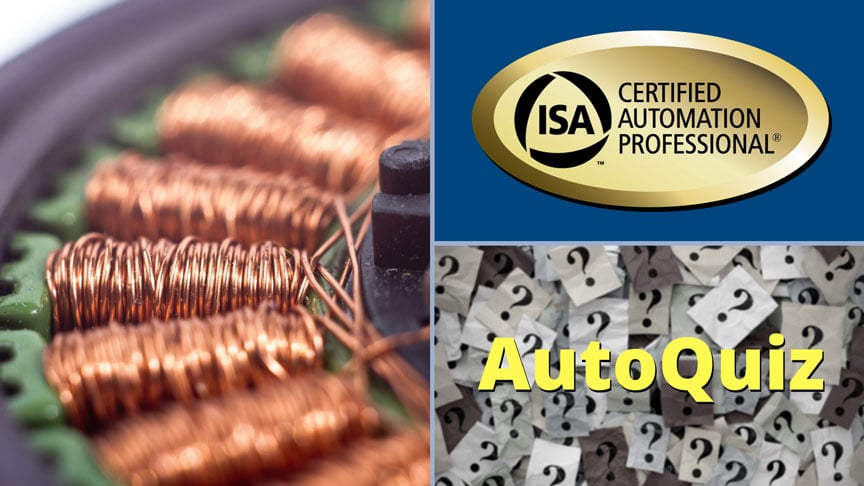AutoQuiz is edited by Joel Don, ISA's social media community manager.
Today's automation industry quiz question comes from the ISA Certified Automation Professional certification program. ISA CAP certification provides a non-biased, third-party, objective assessment and confirmation of an automation professional's skills. The CAP exam is focused on direction, definition, design, development/application, deployment, documentation, and support of systems, software, and equipment used in control systems, manufacturing information systems, systems integration, and operational consulting. Click this link for information about the CAP program. The following question comes from the CAP study guide, Performance Domain VI, Operations and Maintenance.

Most AC motors operate on the principle of:
a) capacitance
b) resistance
c) induction
d) semi conduction
e) none of the above
An AC motor consists of a rotor (rotating portion) with a laminated iron core containing copper bars in the slots. In addition, the motor contains stator field windings (stationary portion). When AC current applies to the stator, a current propagates in the rotor producing a rotor field polarity that opposes the stator field. Capacitors may serve for starting single-phase motors, but this does not apply to the operational basics of the motor, as capacitance refers to the storage of energy (not a function of a motor). A motor does include resistance, but the operation of the motor rotation is not due to its resistance. Basic motor operation has no relation to semi conduction. Reference: Tomal, Electronic Troubleshooting, McGraw-Hill, 1998.
The correct answer is C, induction.




